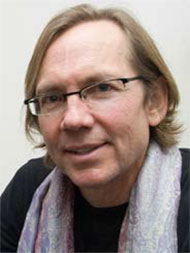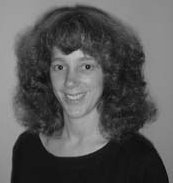Organizer & Speaker Biographies
Organizers
Ayşe Coşkun

Prof. Ayşe K. Coşkun is a full professor at Boston University (BU) at the Electrical and Computer Engineering Department, where she leads the Performance and Energy Aware Computing Laboratory (PeacLab) to solve problems towards making computer systems more intelligent and energy-efficient. Coskun is also the Director of the Center for Information and Systems Engineering (CISE). Coskun’s research interests intersect design automation, computer systems, and applied machine learning. Her research outcomes are widely recognized and culminated in several technical awards, including the NSF CAREER Award, the IEEE CEDA Ernest Kuh Early Career Award, and an IBM Faculty Award. Coskun has been an avid collaborator of industry (collaborators include IBM TJ Watson, Oracle, AMD, Intel, and others) and her research team has released several impactful software artifacts and tools to the open-source community. Following her passion in increasing diversity in STEM fields, Coskun has regularly participated in outreach programs at BU and also founded a new forum called “Advancing Diversity in EDA” (DivEDA). She currently serves as the Deputy Editor-in-Chief of the IEEE Transactions on Computer Aided Design. Coskun received her PhD degree in Computer Engineering from University of California San Diego and her BS degree in Microelectronics Engineering from Sabanci University in Turkey.
Christopher Johnson
Christopher W Johnson is a scientist at Los Alamos National Laboratory in the Geophysics Group (EES-17) and a former Distinguished Feynman Postdoc fellow. Johnson holds a B.S. degree from Georgia Institute of Technology and a Ph.D. from UC Berkeley. He specializes in seismology and tectonic geodesy with a focus on ground surface deformation, seismic signal detection, and crustal stress changes. Active research applies machine learning techniques to seismic and geodetic signals to extract and interpret ground motions and earthquake fault characteristics.
Paul Johnson
 Paul Johnson works in domains that include fault slip and earthquake processes, nonlinear elasticity in earth materials, acoustics of porous media and time-reversed acoustics. Johnson has been instrumental in pioneering applications of machine learning to geophysical applications. He is a Fellow of Los Alamos National Laboratory (2008), the Acoustical Society of America (2005), the American Geophysical Union (2011), and the American Physical Society (2016).
Paul Johnson works in domains that include fault slip and earthquake processes, nonlinear elasticity in earth materials, acoustics of porous media and time-reversed acoustics. Johnson has been instrumental in pioneering applications of machine learning to geophysical applications. He is a Fellow of Los Alamos National Laboratory (2008), the Acoustical Society of America (2005), the American Geophysical Union (2011), and the American Physical Society (2016).
Eren Kurshan

Dr. Eren Kurshan currently leads Research and Methodology efforts at Morgan Stanley towards building capabilities in emerging AI/ML techniques such as graph AI/ML, KG based reasoning etc. Prior to this role, she was the Executive Head of AI and Machine Learning for Client Protection at Bank of America Corporation, where she was responsible for leading the development of custom Machine Learning and Deep Learning solutions for fraud detection, prevention and operational improvement. Dr. Kurshan and her team built the first generation of in-house AI and Machine Learning models for Bank of America’s payment systems portfolio (including Credit Card, Debit Card, ATM, Wires, ACH, P2P Payments, Checks, Deposits, Online/Bill Pay transactions, Alert Processing and Prioritization etc). Dr. Kurshan has served as the technical lead for various AI and Data Science programs at Columbia University, J.P. Morgan Corporate and Investment Bank, and IBM. She was a Visiting Fellow at Princeton University Center for Information Technology Policy during 2015-2016 and served as an Adjunct Professor of Computer Science at Columbia University since 2014. Dr. Kurshan received her Ph.D. in Applied Algorithms and Theoretical Computer Science from the University of California. She has over 60 peer reviewed technical conference and journal publications and over 100 patents. She was the recipient of 2 Best Paper Awards from IEEE and ACM Conferences, Outstanding Research and Corporate Accomplishment Awards from IBM.
Speakers
Rachel Abercrombie

Rachel Abercrombie investigates all aspects of the earthquake rupture process, for example, how earthquakes start and grow, what factors govern the size and location of slip, and how one earthquake affects another. She has studied earthquakes over a wide range of magnitudes and frequencies in many tectonic environments. In particular, she has focused on earthquake scaling and nucleation. Professor Abercrombie has also worked on attenuation and site effects. Her aim is to understand the factors controlling seismic slip by studying earthquakes under a wide range of conditions (for example, on the San Andreas System, in subduction zones, in the oceans, and also very deep earthquakes).
Karianne Bergen

Karianne J. Bergen is an Assistant Professor of Data Science and Earth, Environmental and Planetary Sciences and Assistant Professor of Computer Science at Brown University. Her research interests are in scientific machine learning and explainable AI, with a focus on applications in the geosciences. Her past work has focused on machine learning and data mining techniques for pattern recognition and discovery in large, complex sensor datasets, including her dissertation research on large-scale earthquake detection in regional seismic networks. Dr. Bergen earned a Ph.D. and M.Sc. in Computational and Mathematical Engineering from Stanford University, and a B.Sc. in Applied Mathematics from Brown University. She completed her postdoctoral training at Harvard University where she was a Data Science Initiative Postdoctoral Fellow in Computer Science and Earth and Planetary Sciences. Dr. Bergen also previously held a role as a staff data scientist in the Biological and Chemical Defense Systems Group at MIT-Lincoln Laboratory.
Peter Gerstoft
 Peter Gerstoft received the M.Sc. and the Ph.D. from the Technical University of Denmark, (in Structual Engineering) Lyngby, Denmark, in 1983 and 1986, respectively, and also a the M.Sc. from the University of Western Ontario, (in the Alan G Davenport Wind Engineering Group) London, Canada, in 1984. From 1987-1992 he as employed at Ødegaard and Danneskiold-Samsø, Copenhagen, Denmark, working on forward modeling and inversion for seismic exploration, and from 1989-1990 he was Visiting Scientist at the Ocean Engineering Massachusetts Institute of Technology, Cambridge, and at Woods Hole Oceanographic Institute, Cape Cod. From 1992–1997 he has been a Senior Scientist at Nato CMRE La Spezia, Italy, where he developed the SAGA inversion code, which is used for ocean acoustic and electromagnetic signals. Since 1997 he has been with Marine Physics Laboratory, University of California San Diego. His research interests include global optimization, modeling and inversion of acoustic, elastic and electromagnetic signals. Peter is a Fellow of IEEE and a Fellow of Acoustical Society of America, elected member of the International Union of Radio Science, Commission F.
Peter Gerstoft received the M.Sc. and the Ph.D. from the Technical University of Denmark, (in Structual Engineering) Lyngby, Denmark, in 1983 and 1986, respectively, and also a the M.Sc. from the University of Western Ontario, (in the Alan G Davenport Wind Engineering Group) London, Canada, in 1984. From 1987-1992 he as employed at Ødegaard and Danneskiold-Samsø, Copenhagen, Denmark, working on forward modeling and inversion for seismic exploration, and from 1989-1990 he was Visiting Scientist at the Ocean Engineering Massachusetts Institute of Technology, Cambridge, and at Woods Hole Oceanographic Institute, Cape Cod. From 1992–1997 he has been a Senior Scientist at Nato CMRE La Spezia, Italy, where he developed the SAGA inversion code, which is used for ocean acoustic and electromagnetic signals. Since 1997 he has been with Marine Physics Laboratory, University of California San Diego. His research interests include global optimization, modeling and inversion of acoustic, elastic and electromagnetic signals. Peter is a Fellow of IEEE and a Fellow of Acoustical Society of America, elected member of the International Union of Radio Science, Commission F.
Ben Holtzman

Ben Holtzman is a geophysicist with interests in rock mechanics across a broad range of conditions in the Earth, machine learning method development, and expanding the viability of geothermal energy for clean power generation. He is affiliated with the Lamont Doherty Earth Observatory of Columbia University and MIT’s Earth Resources Laboratory in the Earth, Atmospheric and Planetary Sciences Department.
Laura Laurenti

Laura Laurenti is in her 3h year of the Ph.D. program in Data Science at Sapienza University of Rome. Her research is focused on identification of earthquakes’ precursors using Machine Learning. The first goal is to improve existing deep learning (DL) techniques and development of new ones for application to lab earthquakes. The aim is to predict time to failure, the magnitude of labquakes and fault zone stress state. This first objective is linked with the development of techniques to detect changes in rock properties prior to failure (precursors). The research is also about how to connect the lab work with field observations from tectonic faults, to search for earthquake precursors and develop DL techniques to predict changes in seismicity rate, and build predictive models for tectonic faulting. Laura’s research is supported by the ERC-funded project TECTONIC. She is currently in a visiting period at LANL. She holds a Master of Science in Data Science from Sapienza University of Rome and a Bachelor of Media Science and Technology from Tor Vergata University of Rome.
Chris Marone

Chris Marone is Professor of Geophysics at the University of Rome, La Sapienza and Penn State University. His work is primarily in friction, earthquake physics, and fluid flow in geologic materials. After completing his PhD at Columbia University in 1988 he was a post-doc at Melbourne University, Australia and the CSIRO Division of Geomechanics. He was then research adjunct professor at UC Berkeley before joining the faculty at MIT in 1992. In 2001 Marone moved to Penn State University, where he built the Rock Mechanics lab and served in various administrative roles until 2020 when he moved to Rome to begin an European Research Council advanced grant (TECTONIC). He is currently running TECTONIC, teaching part time at La Sapienza, building a new lab in Rome and continuing to run the lab at Penn State.
Mostafa Mousavi

Mostafa Mousavi is a research scientist at Google. His research focuses on characterizing earthquake sources and ground motions using large-scale sensor datasets and through innovative methodological solutions. He received his Ph.D. from the University of Memphis in 2017 and was a postdoctoral fellowship at Stanford University from 2017 to 2019.
Daniel O’Malley

Daniel O’Malley leads the Subsurface Flow and Transport Team within the Energy and Natural Resources Security Group at Los Alamos National Laboratory (LANL). He earned a B.S. in computer science and mathematics, an M.S. in mathematics, and a Ph.D. in applied mathematics, all from Purdue University. His research interests include computational science, quantum computing, and machine learning with an emphasis on applications to subsurface flow and transport. He has received numerous awards including a LANL Early Career Research award, a LANL Director’s Postdoctoral Fellowship, the InterPore-Fraunhofer Award for Young Researchers from the International Society for Porous Media, a Charles C. Chappelle Fellowship from Purdue University, and a LANL Large Team Distinguished Performance Award. He has published more than 90 peer-reviewed articles and his work has been highlighted multiple times in SIAM News.
Srisharan Shreedharan
Srisharan is an Assistant Professor of geomechanics and geophysics in the Department of Geosciences at Utah State University. He is broadly interested in faulting, friction and the mechanics of how earthquakes start, propagate and stop, particularly at shallow plate boundaries and in subsurface energy systems. Srisharan uses a combination of friction experiments, ultrasonic monitoring, numerical modeling and machine learning techniques in his research to better understand faulting and friction at multiple scales. Before Utah State, he was a Distinguished Postdoctoral Fellow at the University of Texas Institute for Geophysics. Srisharan earned his PhD in Geosciences at Penn State, and an MS in Geological Engineering from the University of Arizona.

